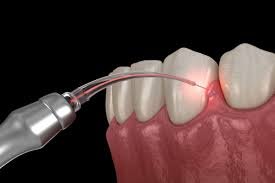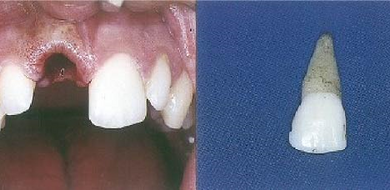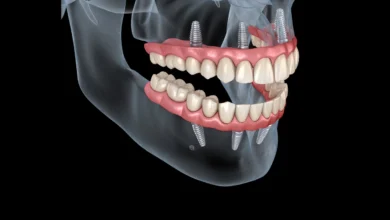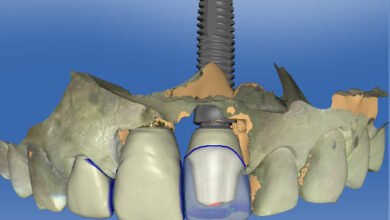
Keywords: SRP, pockets, laser therapy, regeneration
Introduction: Periodontal disease, a significant public health concern, affects a substantial portion of the global population [1]. According to the World Health Organization, severe periodontal disease, which may result in tooth loss, is found in 10–15% of the global population [2]. The prevalence varies across regions and is influenced by factors such as age, socioeconomic status, and access to dental care [3]. The disease’s impact extends beyond oral health, with links to systemic conditions like cardiovascular disease and diabetes, underscoring its significance in overall health management [4].
Traditional management of periodontal disease primarily involves mechanical debridement, such as scaling and root planing (SRP), coupled with oral hygiene education and, in some cases, adjunctive antibiotic therapy [5]. While these methods are effective in managing mild to moderate cases, they have limitations. Deep periodontal pockets can be challenging to clean thoroughly with mechanical methods, and systemic conditions like diabetes may impair wound healing and response to treatment. Furthermore, the invasive nature of some conventional treatments can lead to patient discomfort and prolonged recovery times [6].
Recent advancements in laser technology have introduced new paradigms in periodontal therapy. Different studies have highlighted the clinical efficacy of low-level laser therapy as an adjunct to non-surgical periodontal treatment [7,8].
Laser therapy offers several advantages over conventional treatments [9]. It allows for precise targeting of affected areas, potentially reducing damage to surrounding healthy tissues. Lasers can access deeper periodontal pockets more effectively than mechanical tools [10]. The minimally invasive nature of laser therapy can result in reduced patient discomfort and faster healing times . Additionally, laser therapy shows the potential to enhance tissue regeneration and reduce bacterial loads, leading to improved clinical outcomes [11].
References:
- Batchelor, P. Is periodontal disease a public health problem? Br. Dent. J. 2014, 217, 405–409.
- How, K.Y.; Song, K.P.; Chan, K.G. Porphyromonas gingivalis: An Overview of Periodontopathic Pathogen below the Gum Line. Front. Microbiol. 2016, 7, 53.
- Wamala, S.; Merlo, J.; Boström, G. Inequity in access to dental care services explains current socioeconomic disparities in oral health: The Swedish National Surveys of Public Health 2004–2005. J. Epidemiol. Community Health 2006, 60, 1027–1033.
- Garcia, R.I.; Henshaw, M.M.; Krall, E.A. Relationship between periodontal disease and systemic health. Periodontology 2000 2001, 25, 21–36.
- Ramesh, T.; Sundar, M.; Ranjani, S.S.; Kurian, B. Efficacy of Scaling and Root Planing with and Without Adjunctive use of Diode Laser or Tetracycline Fibers in Patients with Generalised Chronic Periodontitis: A Comparative study. J. Investig. Clin. Dent. 2017, 8, e12188.
- Kwon, T.; Lamster, I.B.; Levin, L. Current Concepts in the Management of Periodontitis. Int. Dent. J. 2021, 71, 462–476.
- Ren, B.; Yan, F.; Kuang, Y.; Li, N.; Zhang, D.; Lin, H.; Zhou, H. A CRISPR/Cas9 toolkit for efficient targeted base editing to induce genetic variations in rice. Sci. China Life Sci. 2017, 60, 516–519.
- Theodoro, L.H.; Marcantonio, R.A.C.; Wainwright, M.; Garcia, V.G. LASER in periodontal treatment: Is it an effective treatment or science fiction? Braz. Oral. Res. 2021, 35, e099.
- Nammour, S. Laser dentistry, current advantages, and limits. Photomed. Laser Surg. 2012, 30, 1–4.
- Posten, W.; Wrone, D.A.; Dover, J.S.; Arndt, K.A.; Silapunt, S.; Alam, M. Low-level laser therapy for wound healing: Mechanism and efficacy. Dermatol. Surg. 2005, 31, 334–340.
- Aoki, A.; Mizutani, K.; Schwarz, F.; Sculean, A.; Yukna, R.A.; Takasaki, A.A.; Romanos, G.E.; Taniguchi, Y.; Sasaki, K.M.; Zeredo, J.L. Periodontal and peri-implant wound healing following laser therapy. Periodontology 2000 2015
Biography : Dr Onisha Vijaykumar has completed his BDS from MAHE University. She completed MDS from Yenepoya University in the Department of periodontology and Implantology. She has obtained her Fellowship in Advanced Aesthetic Dentistry from ILAMED( New Delhi ).
Presenting author details :
Full Name: Dr Onisha Vijaykumar
Category: Oral Presentation
Track name: Laser Assisted Periodontal Therapy
Tags:
#LaserDentistry #PeriodontalTherapy #GumTreatment #DentalLaser #Periodontist #GumHealth #PeriodontalDisease #LANAP #OralHealth #MinimallyInvasiveDentistry #LaserTherapy #LaserGumTreatment #LaserPeriodontics #DentalTechnology #AdvancedDentistry #ModernDentistry #HighTechDentistry #LaserSurgery #DentalInnovation #SoftTissueLaser #DentistryEducation #DentalCareProfessionals #DentalSpecialists #Periodontology #DentalPractice #ContinuingEducation #DentistLife #DentalConference #DentalWebinar #ClinicalDentistry #HealthyGums #NoMoreGumDisease #SmileHealth #GumCare #PainlessDentistry #FastHealing #GumRejuvenation #NonSurgicalGumTreatment #GumLaserTreatment #ComfortableDentistry #DentalAwareness #GumDiseaseAwareness #PeriodontalAwareness #PreventGumDisease #DentalCommunity #OralCareTips #DentalSolutions #SmileMakeover #HealthyMouthHealthyBody #PreventiveDentistry
Upcoming Conference:
4th International Dental Advanced Dentistry, and Oral Health UCG Congress | September 9–11, 2025 | Novotel Al Barsha, Dubai, UAE




